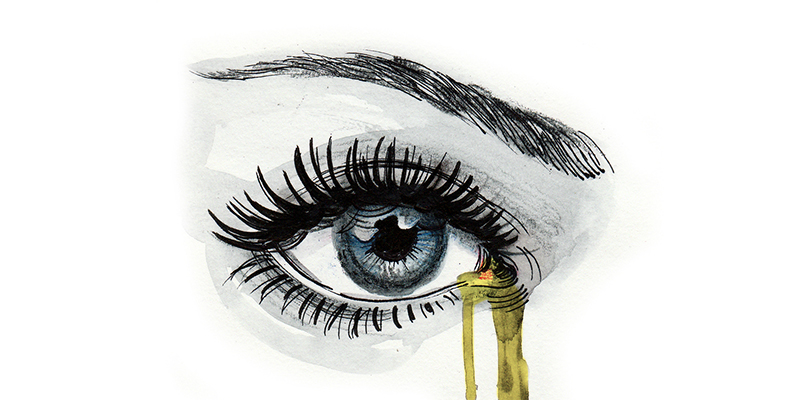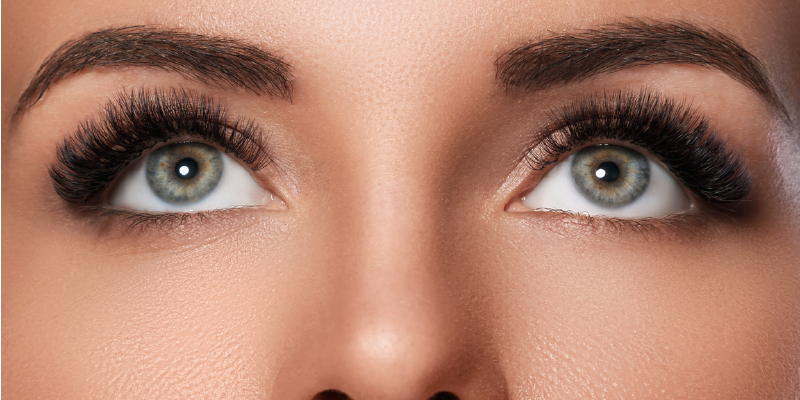There’s been lots of talk about how working long hours sitting at a desk in front of a computer could negatively affect your health. Things like poor posture and lack of exercise are some of the biggest concerns. However, a new potential health issue related to computer usage has been brought to the surface fairly recently, and that is something called digital eye strain.
If you’re familiar with this term, you’ve probably read a little bit about blue light and how it may or may not affect your eye health and vision. To help you separate fact from fiction when it comes to the connection between blue light and your eyes, we’ve parsed out a few notable myths and truths for you here.
Myth: Blue Light Is Only Emitted By “Screened” Devices

Blue light was never really an issue until devices like laptops, tablets and smartphones became commonplace in both the home and office. For this reason, blue light is often associated with these types of technological devices, whereas UV light is associated with sunlight. However, both UV light and visible light (which includes blue wavelengths) are emitted by the sun and can therefore be found outdoors. Additional exposure occurs because blue light is also emitted by our e-readers, cell phones and other devices [1].
Fact: Your Eyes Aren’t Very Good at Blocking out Blue Light
Unlike UV light, blue light is able to reach the inner structures of the human eye much more readily. In fact, close to 100 percent of the blue light to which your eyes are exposed is able to reach the retina. Compare this to less than one percent of UV light that is able to reach the inner eye [2].
Myth: All Blue Light Is Bad
Blue light has gotten a bad rap lately due to its connection with computer vision syndrome and other possible adverse effects. However, this isn’t to say that all blue light is horrible for your eyes. In fact, blue light can be beneficial to the human body for a number of reasons, namely when dealing with seasonal affective disorder and improving sleeping patterns [3]. So the solution to digital eye strain is not necessarily to block out blue light altogether, but to give your eyes a break from large doses of blue light all at once.
Fact: Blue Light Can Cause Digital Eye Strain

Although blue light isn’t always a bad thing, too much of it can be, especially for your eyes. Since the human eye does not block out most blue light, staring at your computer screen or other device for long periods of time can strain your eyes and lead to a condition known as digital eye strain or computer vision syndrome. The most common symptoms of digital eye strain are dry, red, or sore eyes, blurred vision and headaches.
Myth: There’s Nothing You Can Do to Prevent Digital Eye Strain
Fortunately, there are a few steps that you can take to help reduce or prevent the effects of digital eye strain. Start by giving your eyes a break from your computer for at least 20 seconds every 20 minutes or so. If you’re already struggling with an existing eye condition like blepharitis or dry eye, make sure you’re properly cleansing your eye area to help minimize your symptoms.
There are also several types of blue light blocking eye glasses and screen protectors that you can try.
Fact: Blue Light Exposure Can Accelerate Macular Degeneration

More research is needed to understand the potential long-term effects of years of experiencing digital eye strain. However, experts have connected this common eye condition with accelerated macular degeneration of the eye and vision problems down the road [4].
Myth: Only People with Eye Problems Need to Practice Good Eye Hygiene
Even if you don’t usually struggle with dry, red or inflamed eyes, it’s still important to practice good eyelid hygiene to help prevent bacteria, dust and eyelash mites from causing eye complications and contributing to or worsening signs of digital eye strain.
[2] International Journal of Toxicology
[4] Optometry Times




